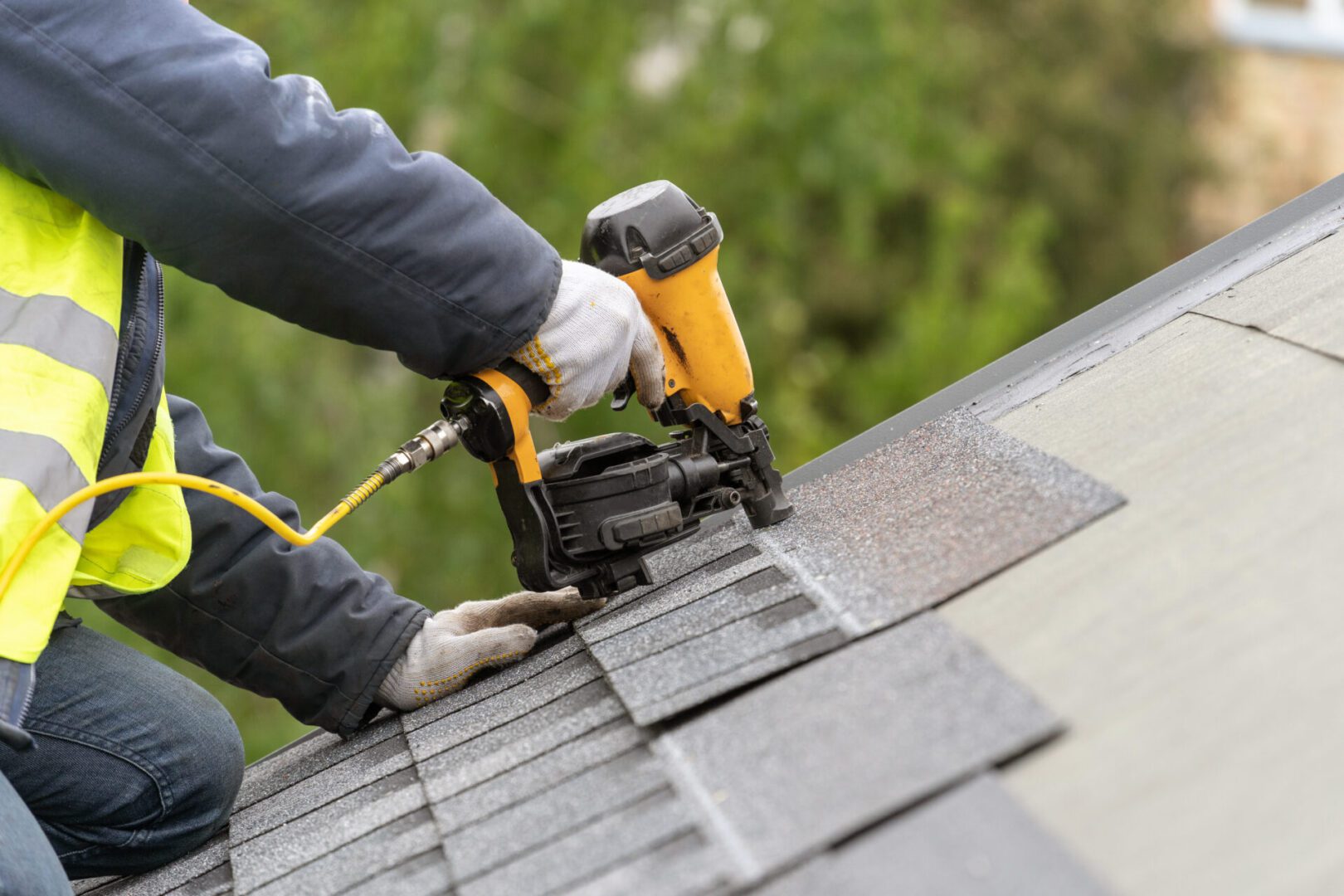Nailed It: How to Stay Safe While Using a Nail Gun at Work

Nail guns are powerful tools that can greatly increase productivity on the job—and greatly increase the risk of injury through puncture wounds to the hands, fingers and feet, too. The National Institute for Occupational Safety and Health estimates that nail guns cause
a total of 37,000 emergency room visits
each year, ranging from minor injuries to fatalities. Before using these tools, it’s important to have proper training and procedures in place to avoid preventable harm on the job.
Thoroughly train employees:
If you are a business owner, prioritizing nail gun safety is critical—and that starts with proper training and operating procedures. All employees, new or seasoned, can benefit from regular trainings. These should include not only safe practices for using nail guns but also correct usage of personal protective equipment (PPE), such as safety shoes, hard hats, high-impact eye protection and hearing protection, that your company should provide at no cost to employees. First aid trainings and protocol for reporting and treating injuries are also important to protect your workers.Closely follow manufacturer instructions:
Although some risks are more heavily associated with specific types of guns, challenges like nailing in cramped positions or on ladders should be discussed in detail since many injuries occur in situations like these regardless of individual nail gun features. Emphasize the importance of following manufacturer instructions for each specific gun, and make sure gun manuals are available at all work sites for workers to reference.Use full sequential triggers:
Use full sequential or single shot triggers instead of bump, contact or automatic triggers. The latter kinds cause preventable injuries around two times the rate of full sequential triggers. Misfiring and accidentally double-firing—two of the leading causes of nail gun injury—can be reduced by swapping them for full sequential guns. The marginally higher rate of productivity from using contact trigger guns is not worth the safety of your employees.Thoroughly inspect equipment before use:
Proper operating procedures should ensure that all nail guns and related equipment are checked before usage. Broken or malfunctioning guns should never be used under any circumstance as they can increase the risk of injury from misfire or unintentional double-firing. Since 12% of nail gun injuries are suffered by workers not even using the gun at the time of misfire, make sure to implement a strict rule against anyone standing in the line of fire while nail guns are in use When operating a nail gun, here are five simple tips to keep in mind to keep yourself and those around you safe:- Never use your non-dominant hand to operate the gun’s trigger.
- Put guns away when not in use to minimize the risk of misfiring.
- Disconnect guns from their power source when you’re not actively using them—even when walking to and from locations or climbing a ladder.
- Keep your space clean. Pick up nails that might have fallen on the ground to avoid stepping on them and risking foot injury. Move hoses or other pieces of equipment away from where they can be stepped on or tripped over.
- Never bypass safety mechanisms. There is no reason to modify or disable these features, and OSHA strongly discourages this practice. Keep safety controls in place to minimize injury risk for everyone.